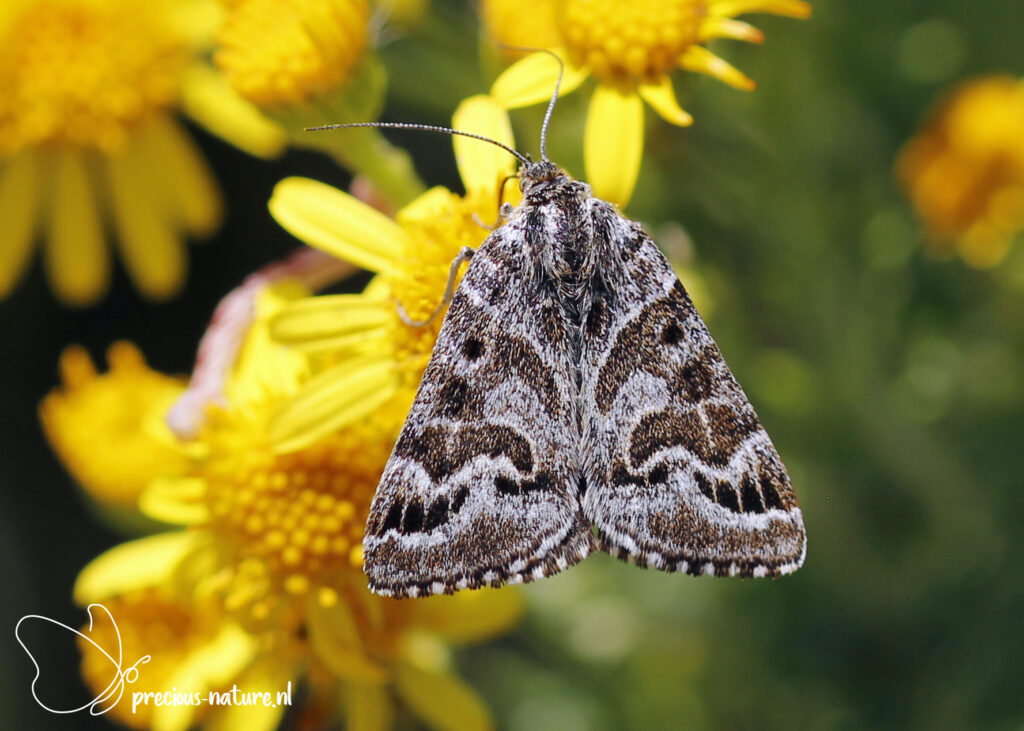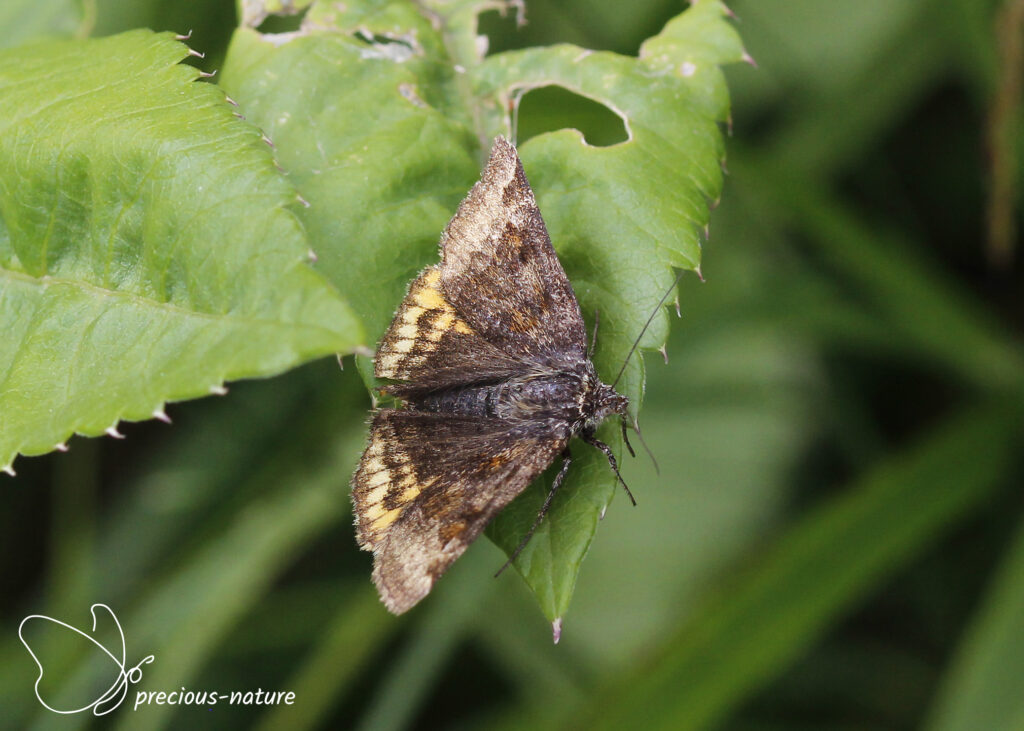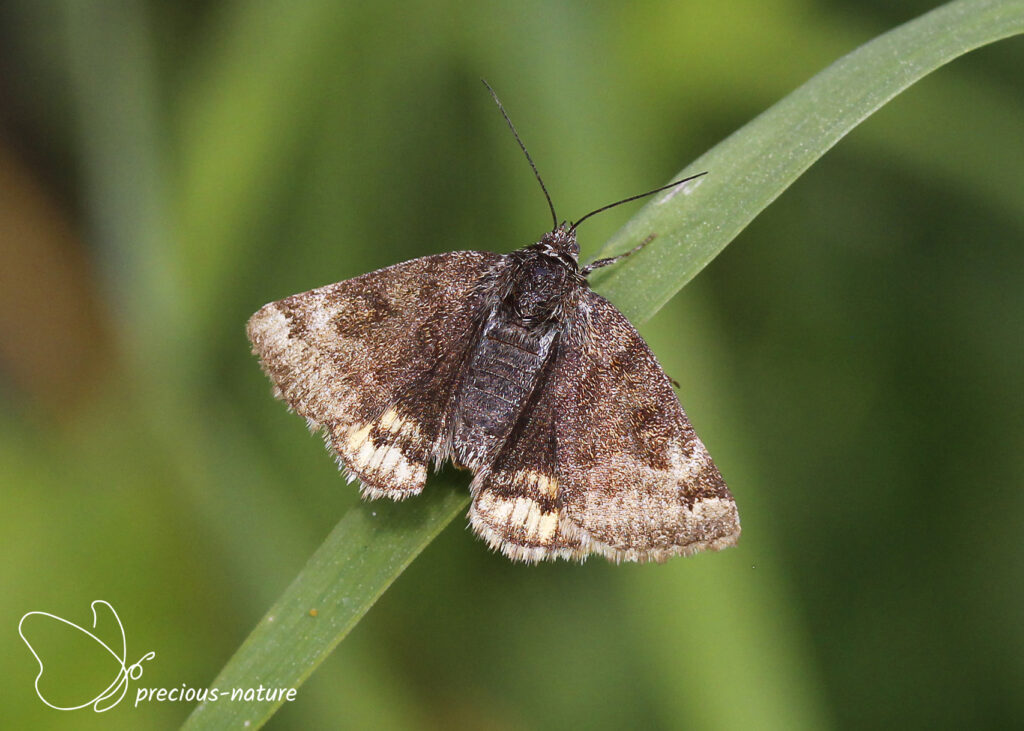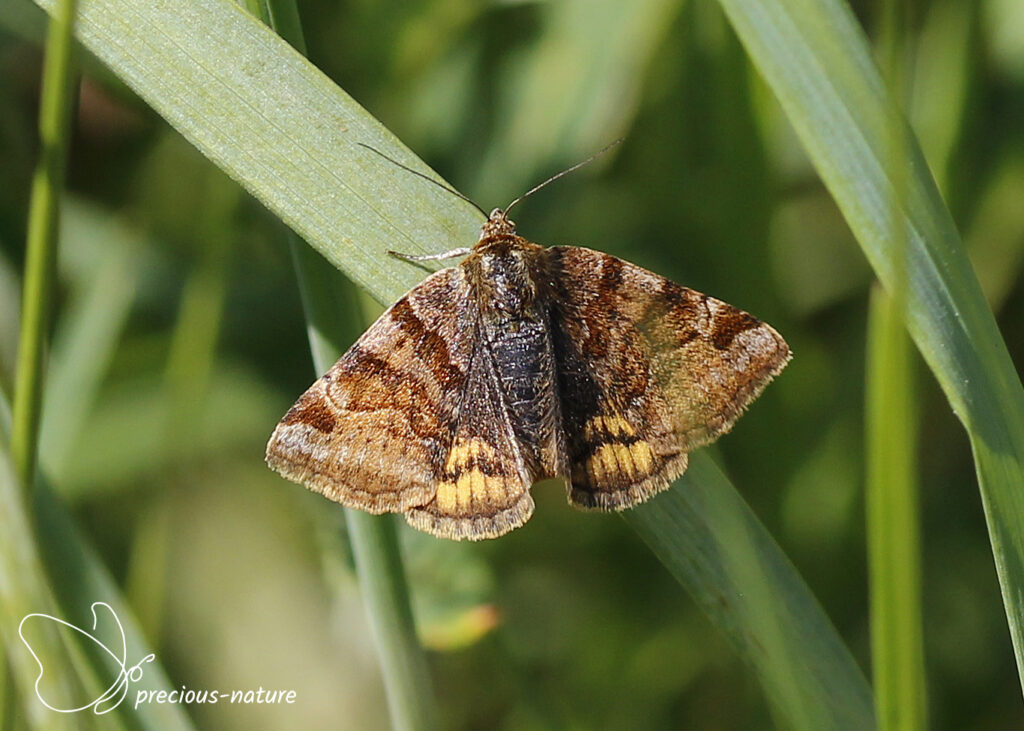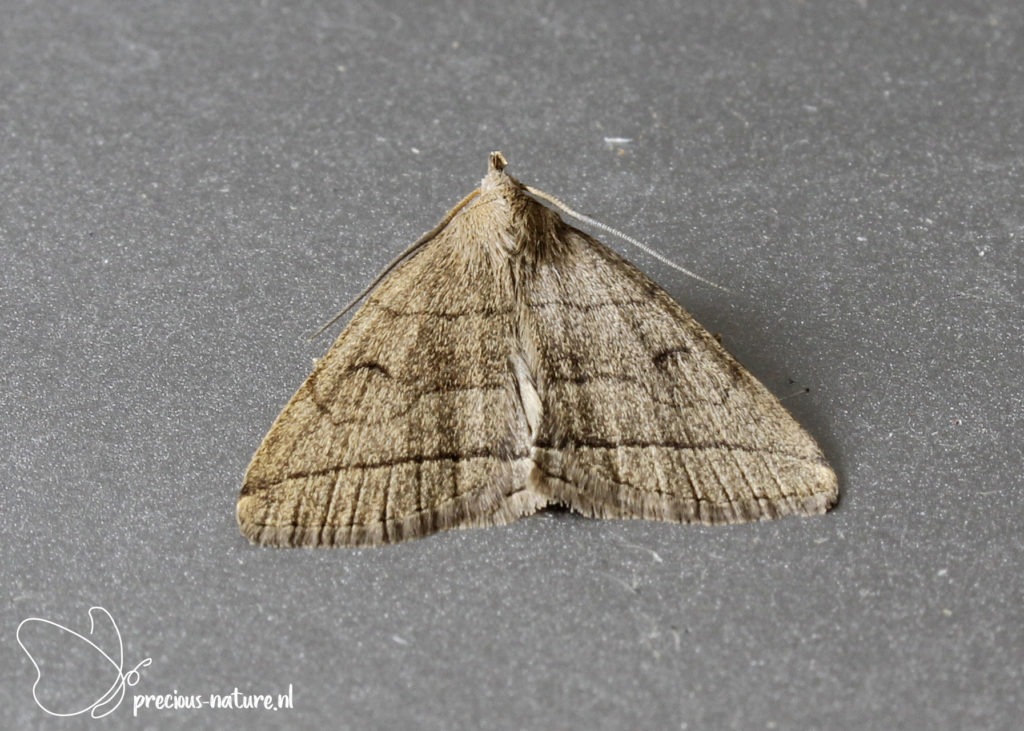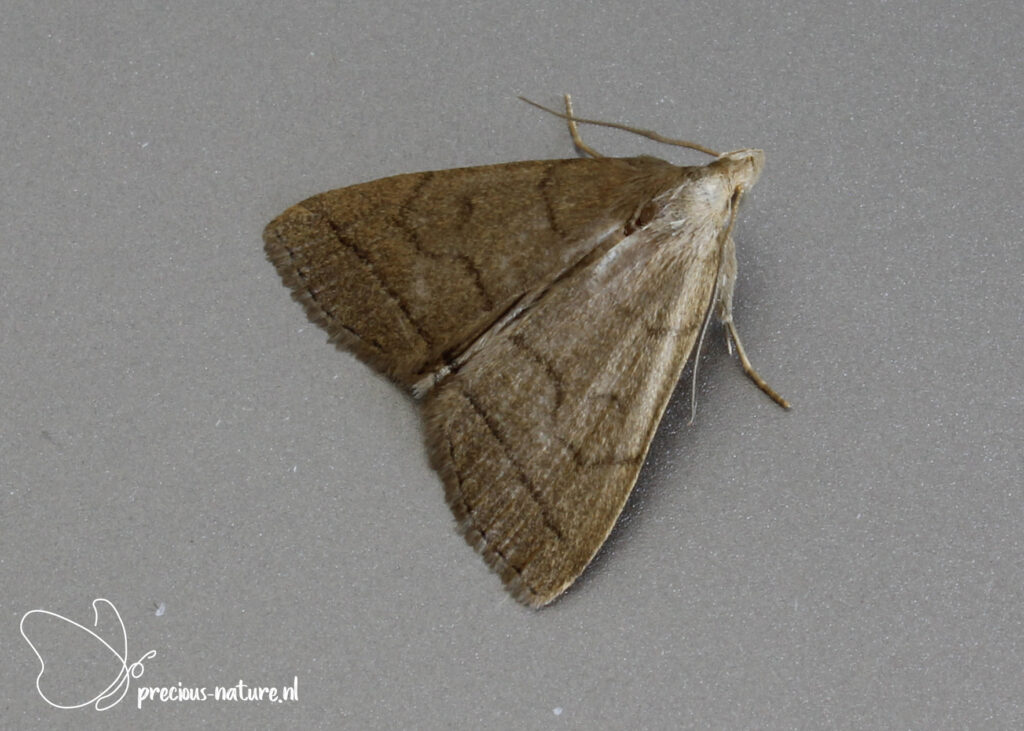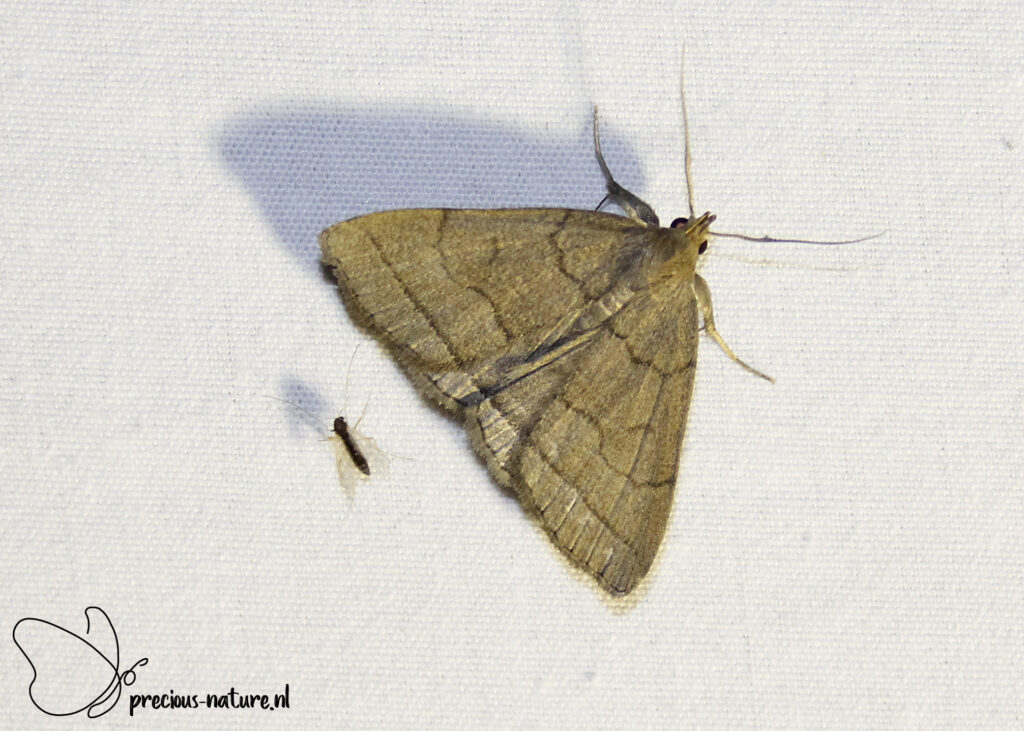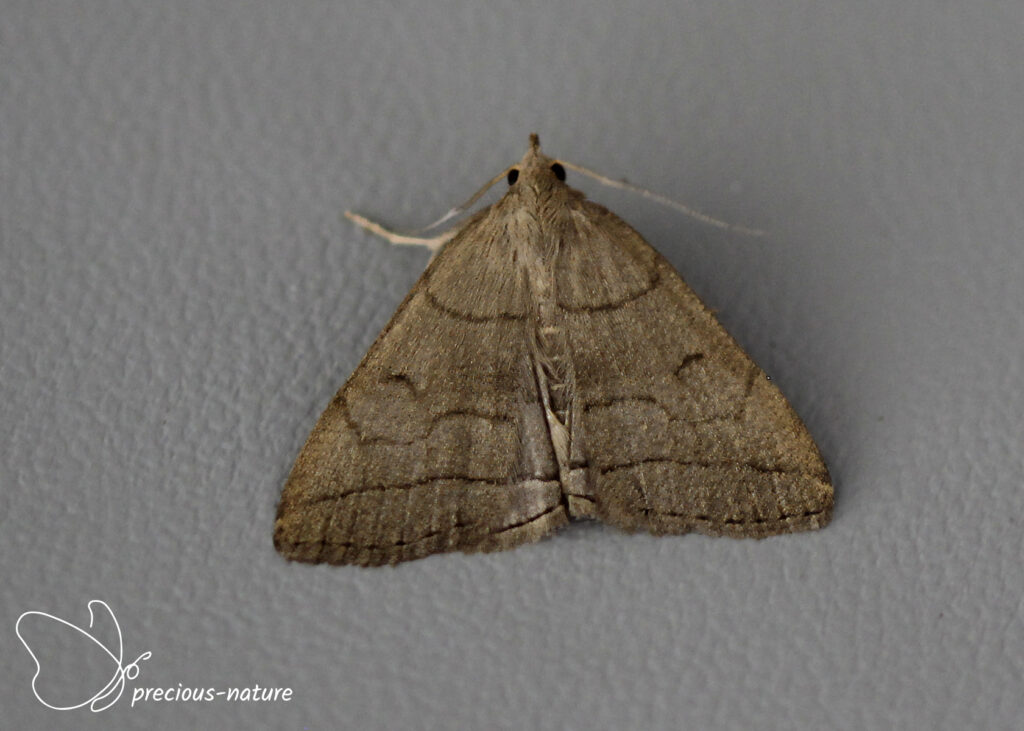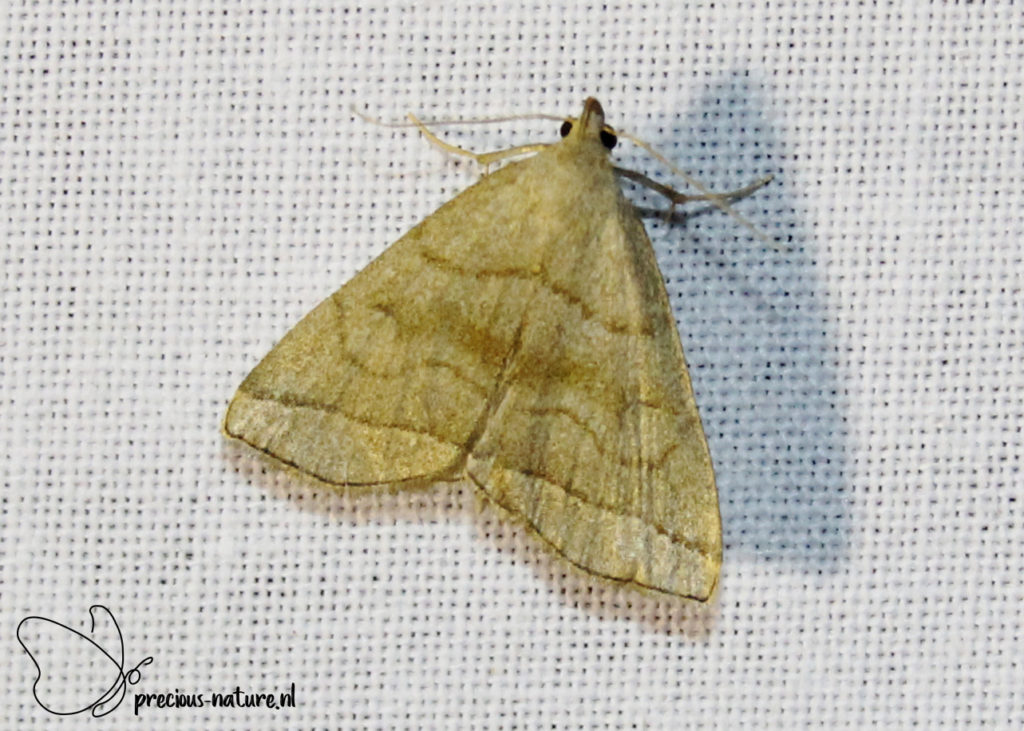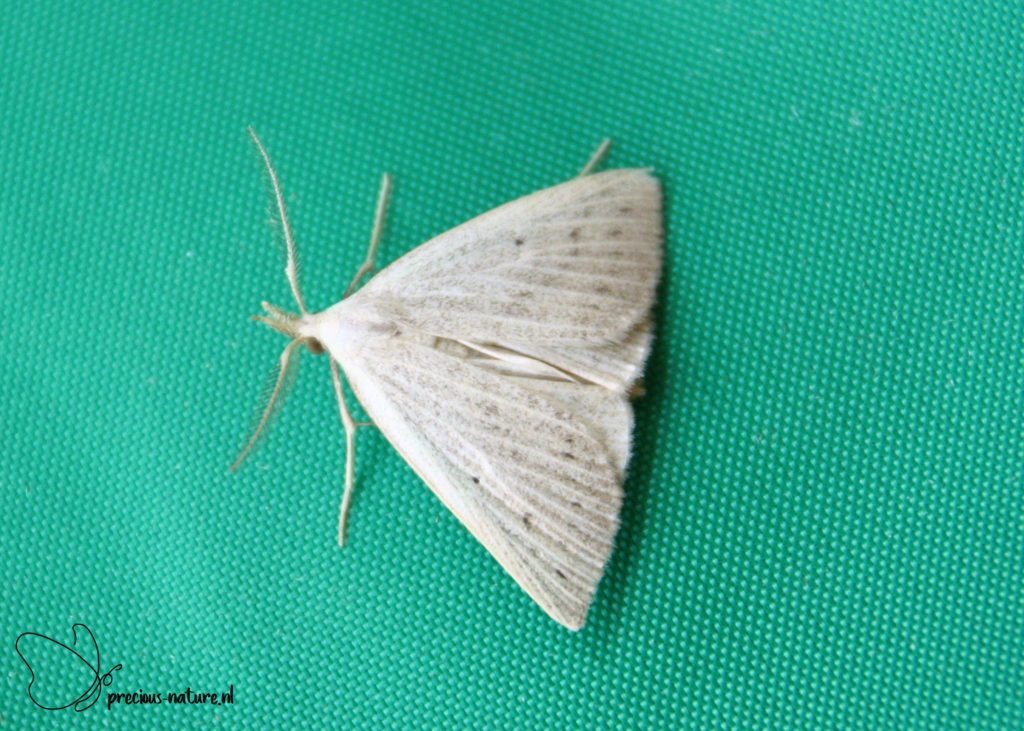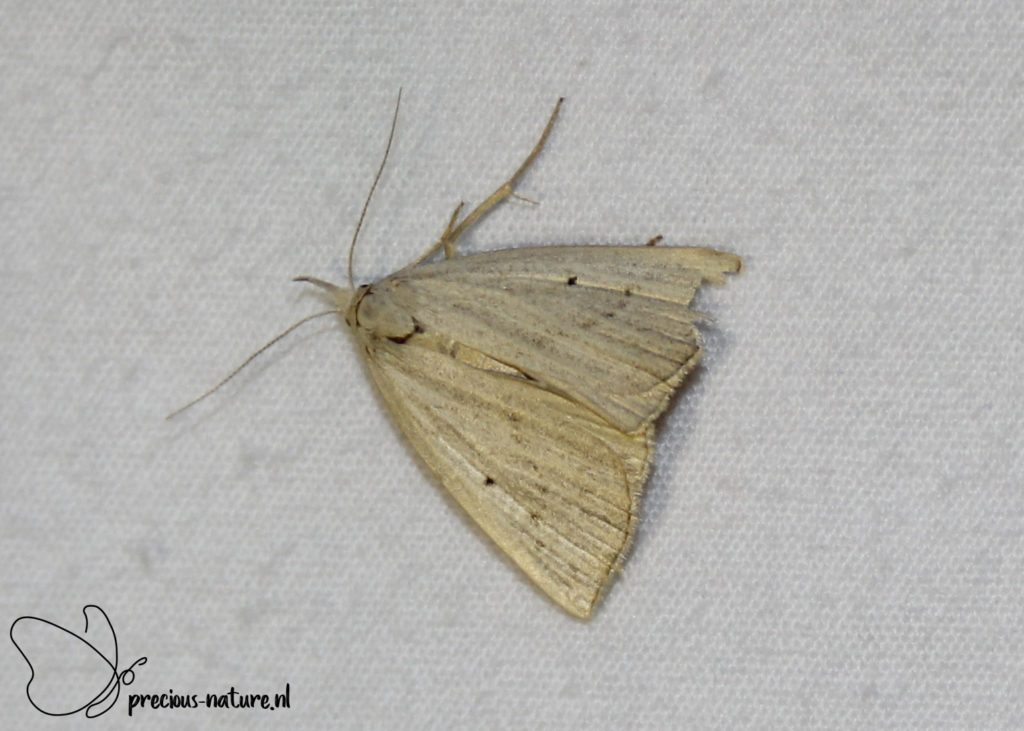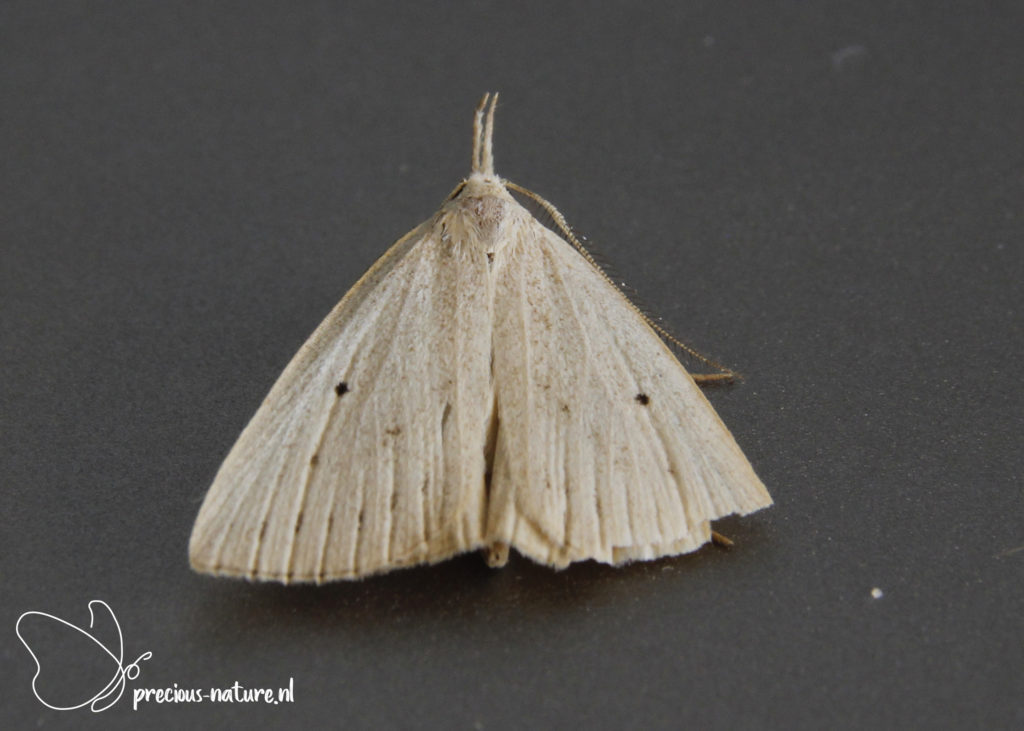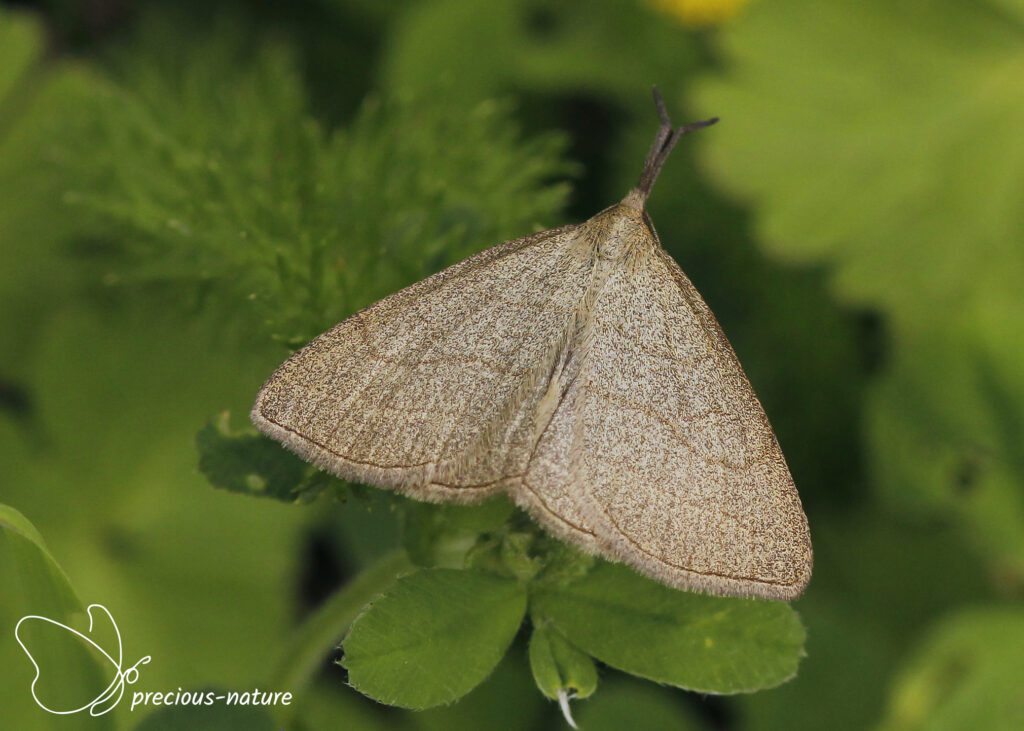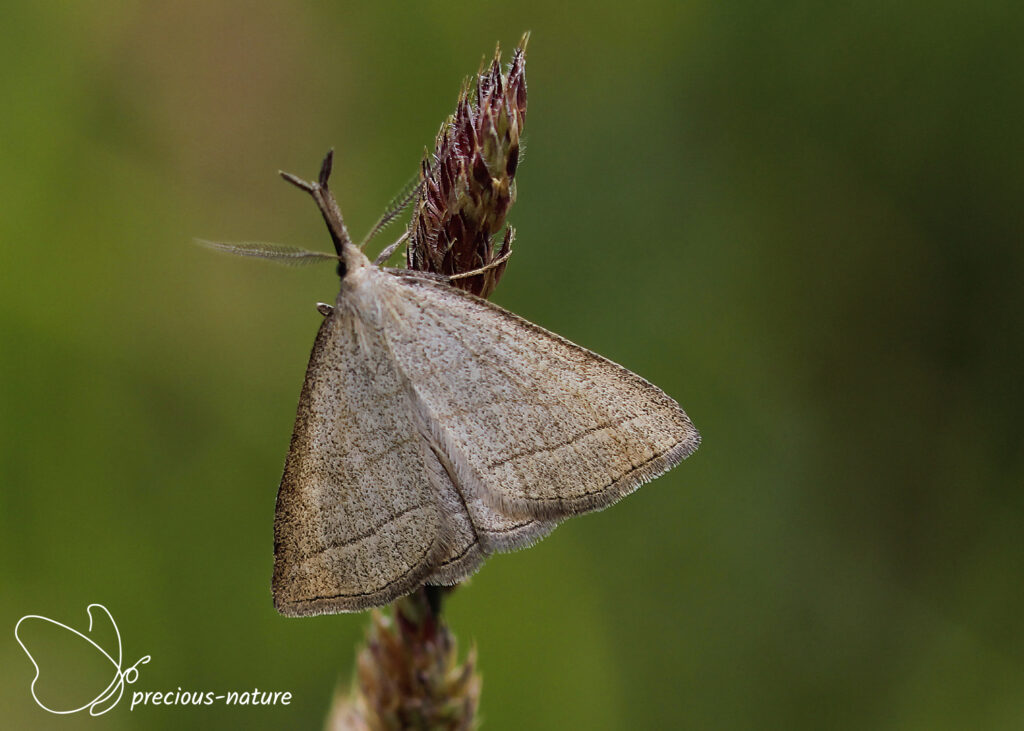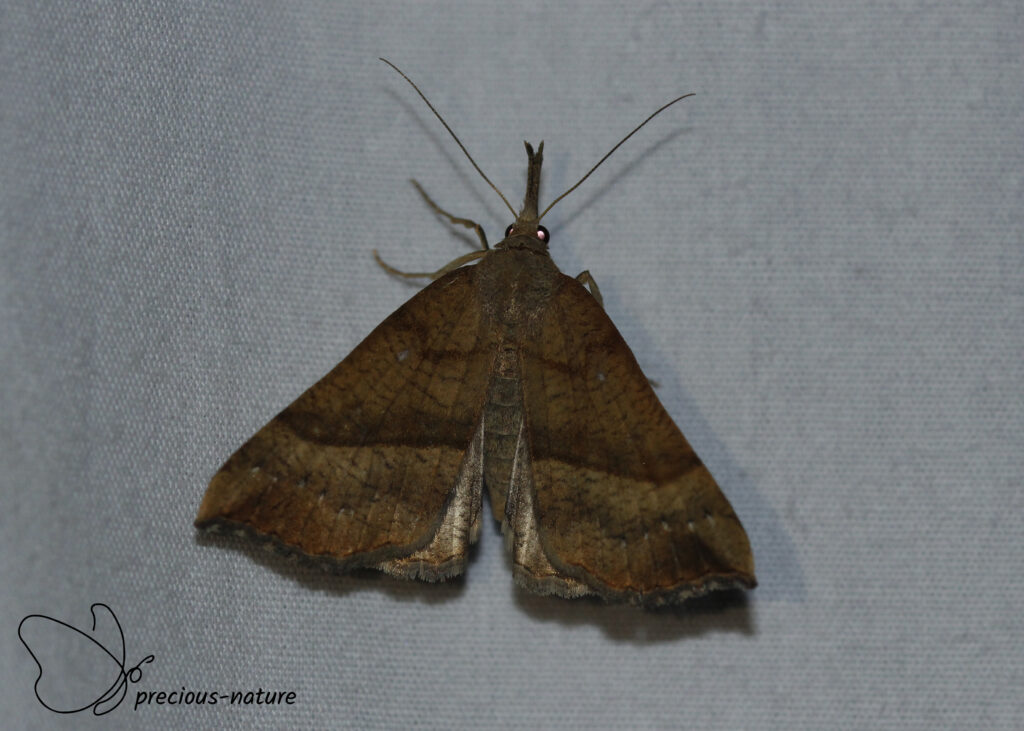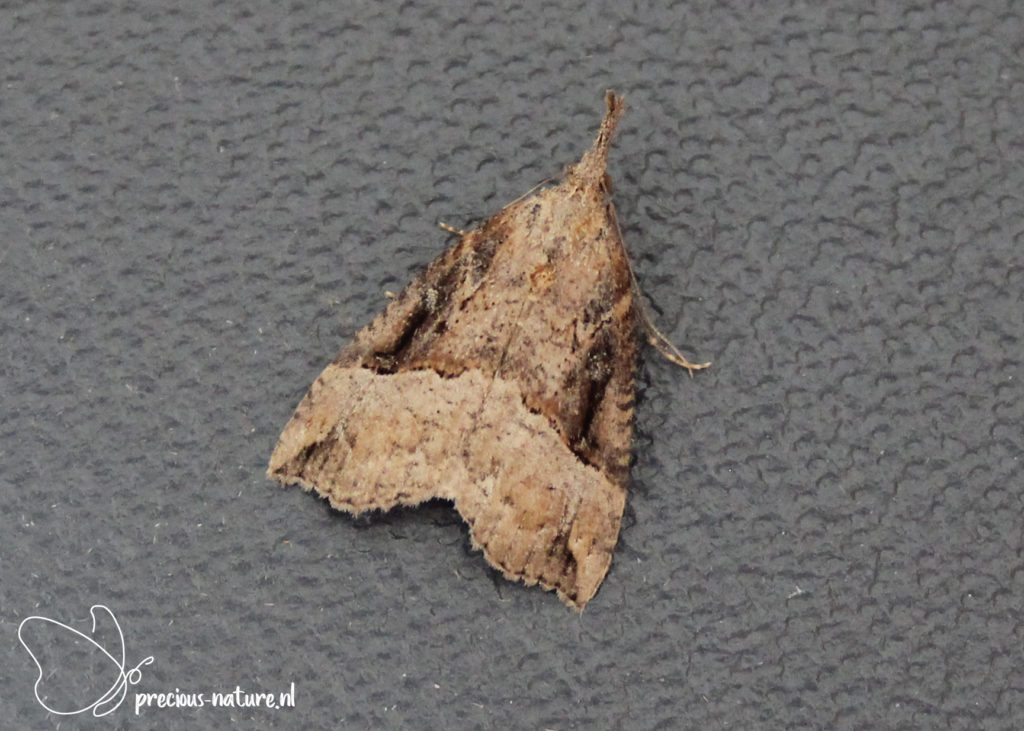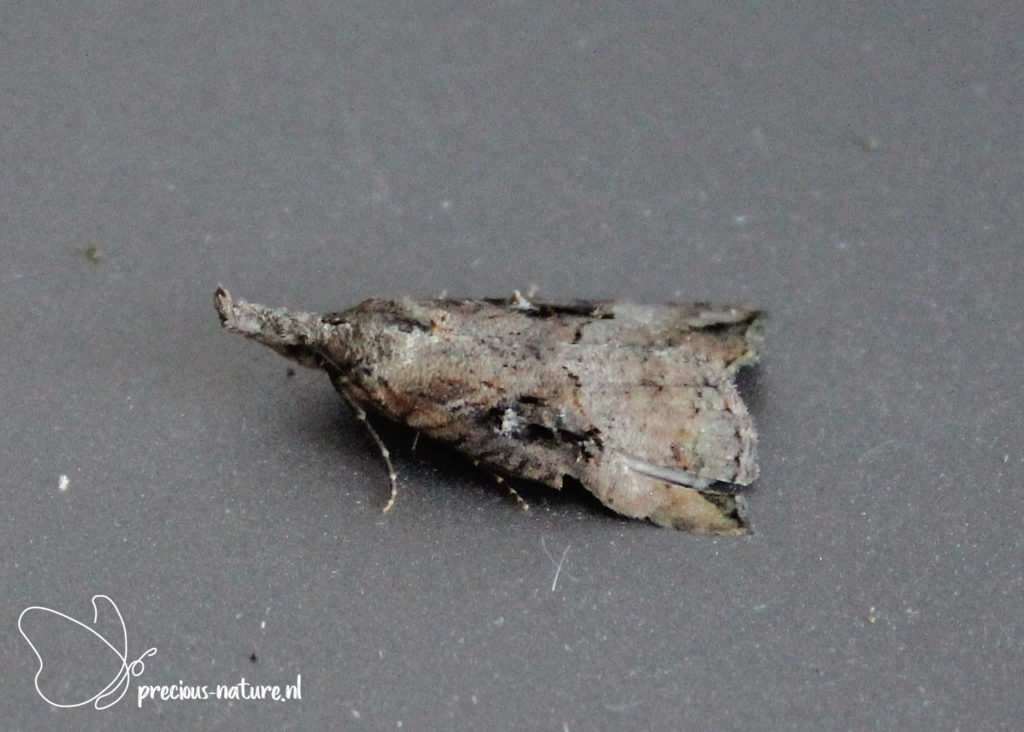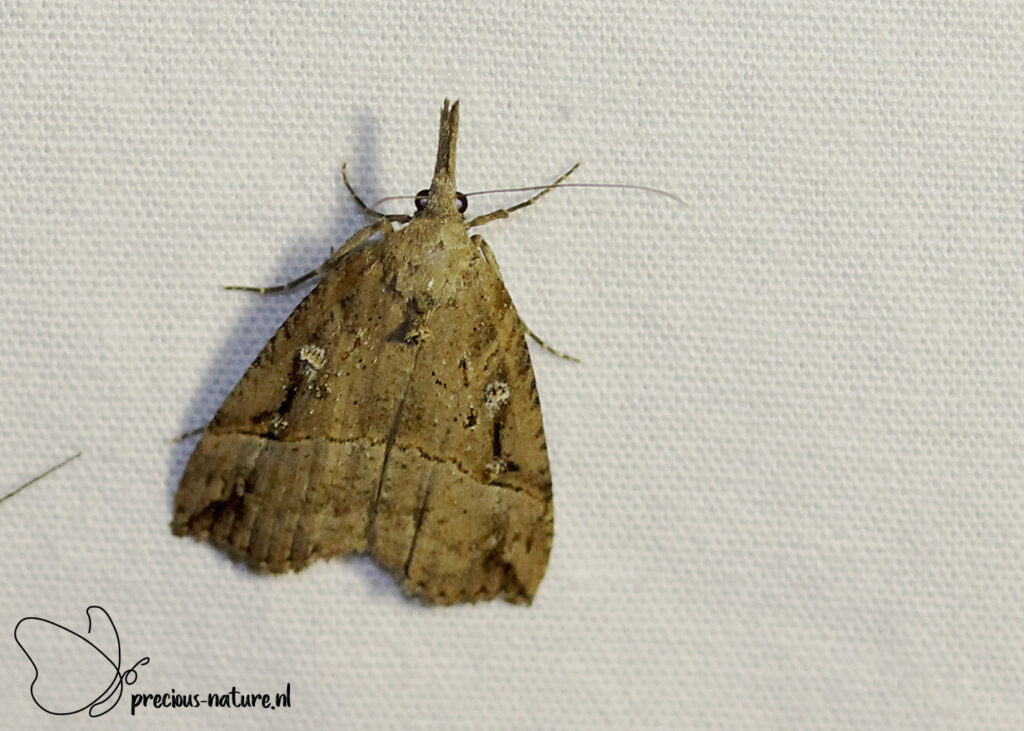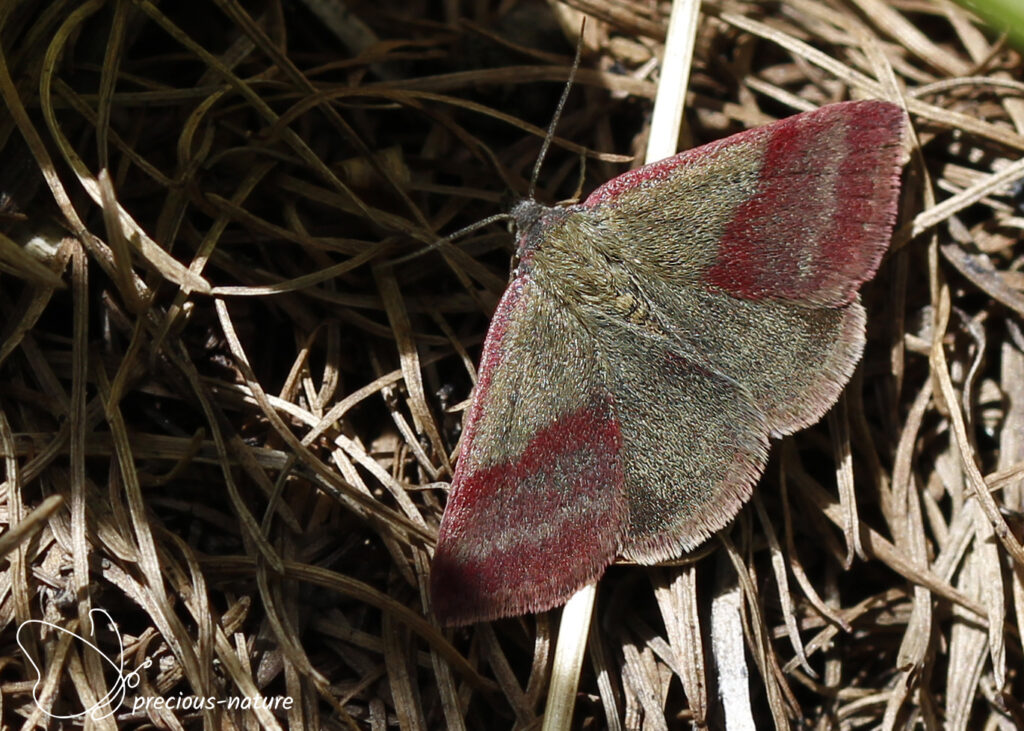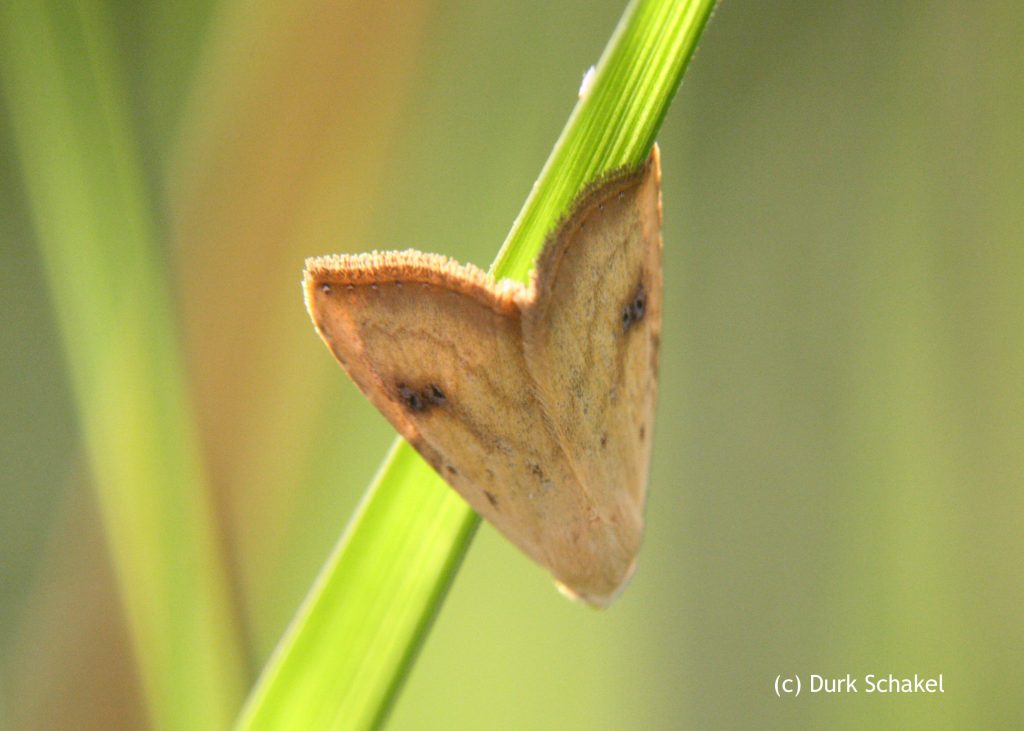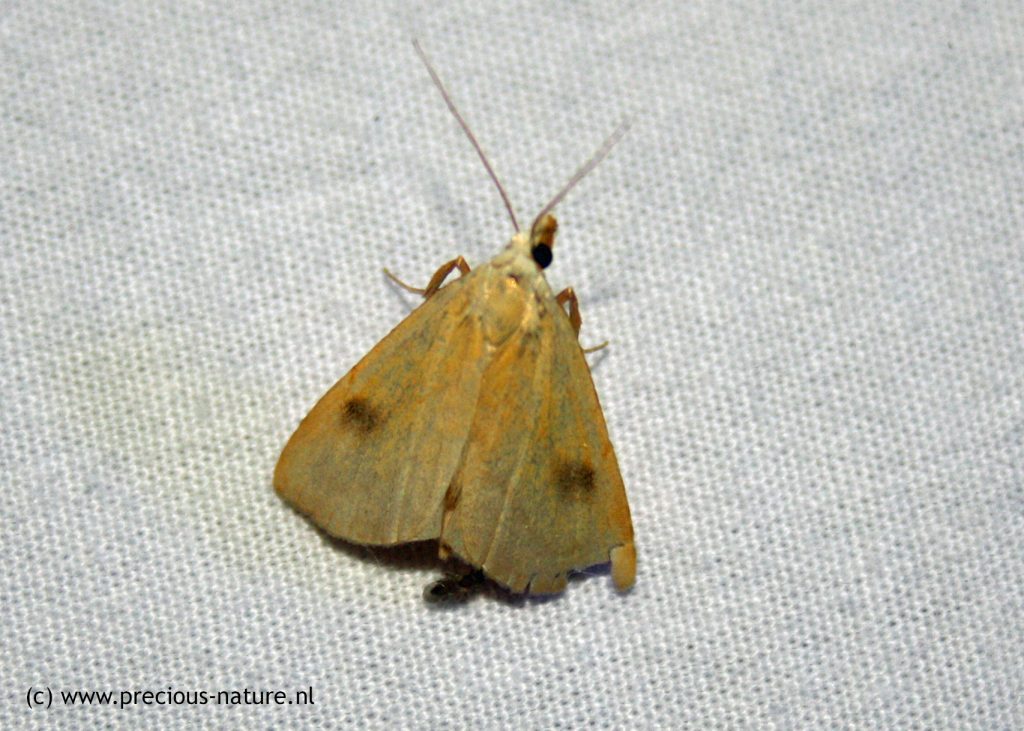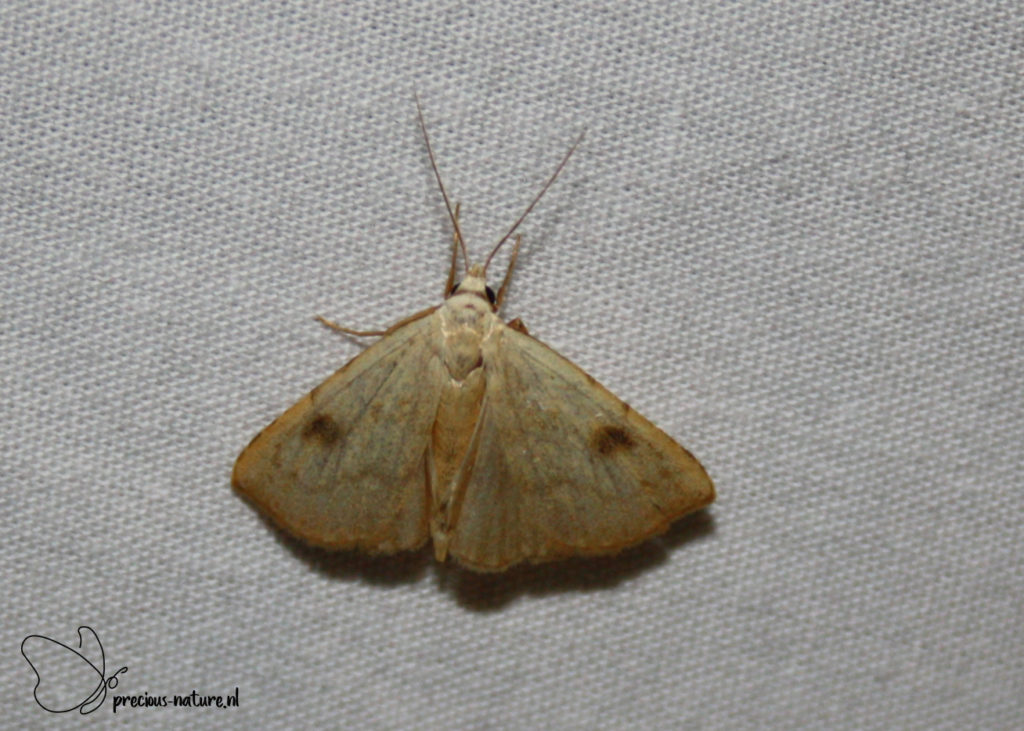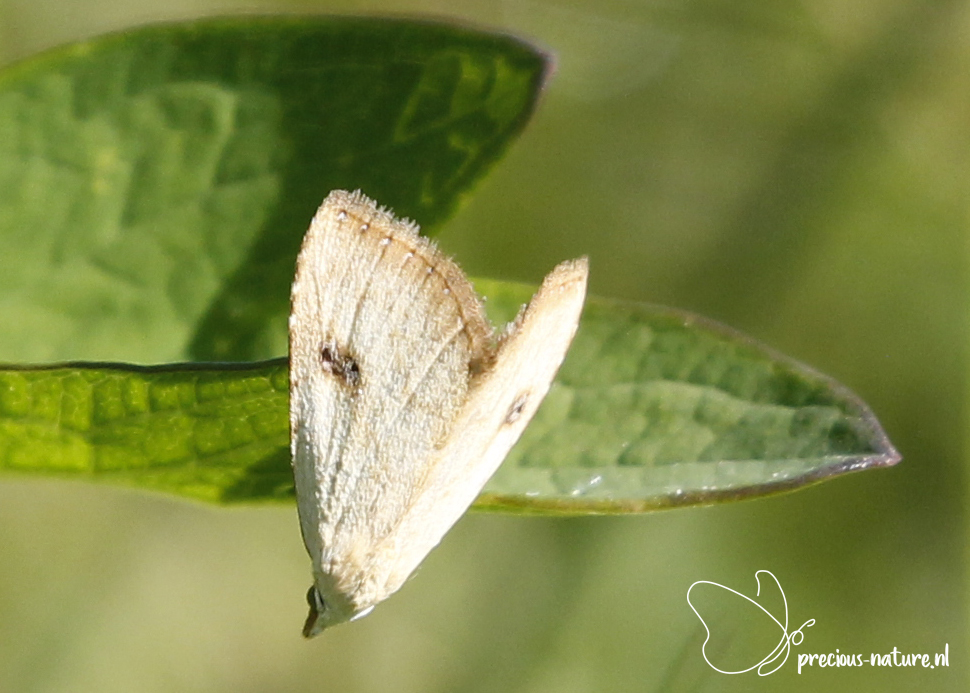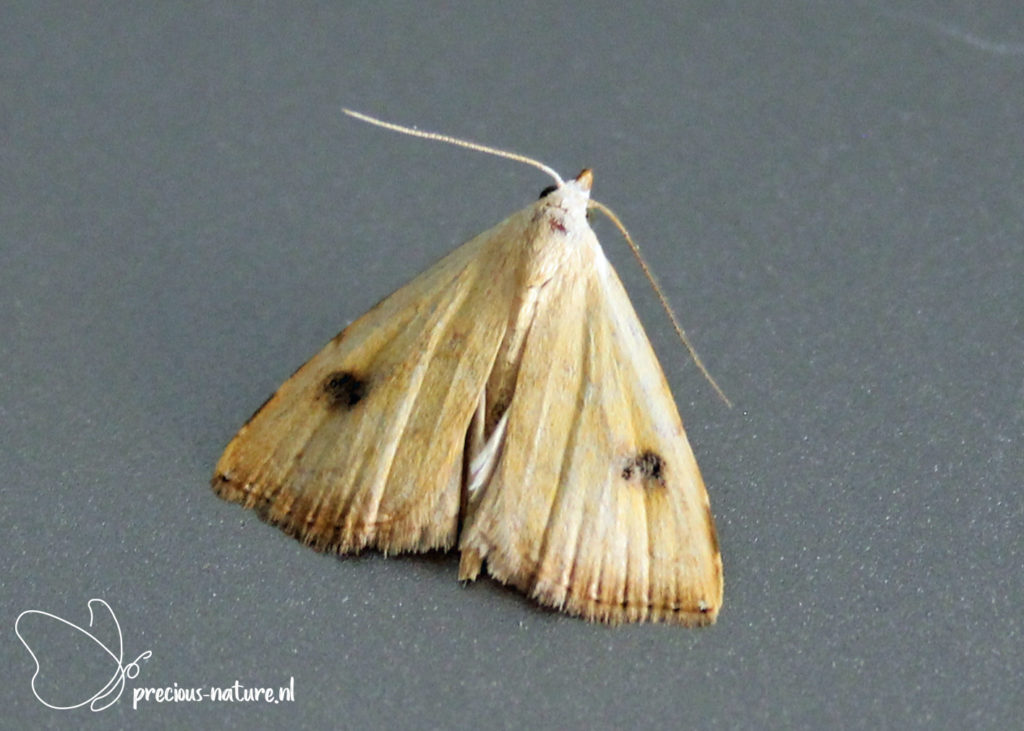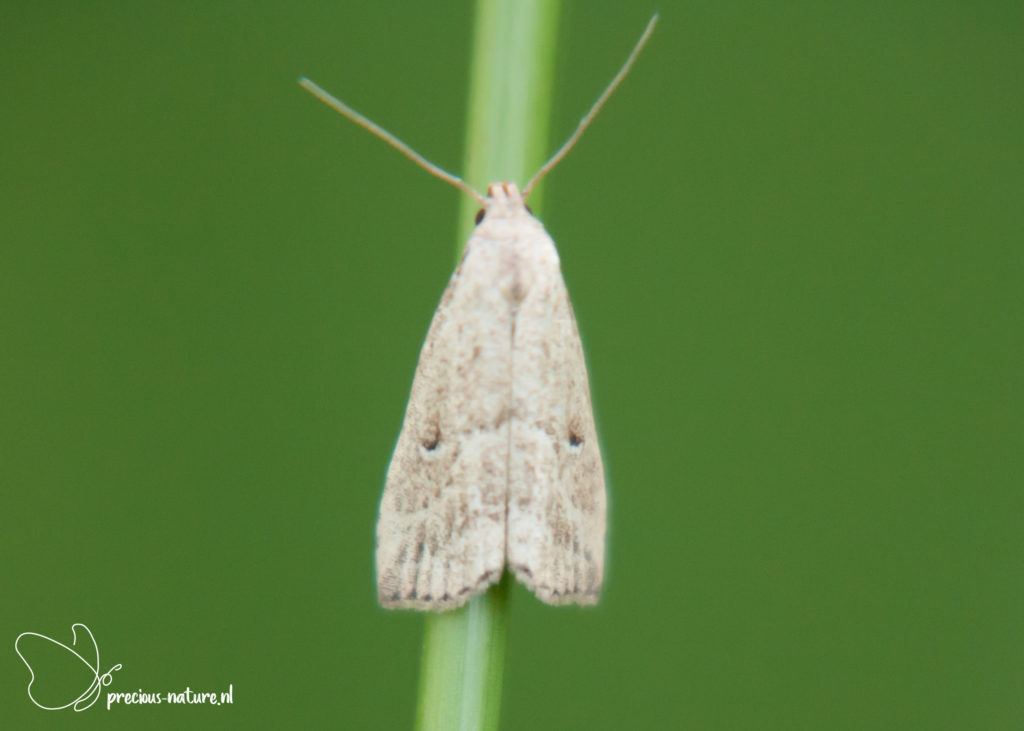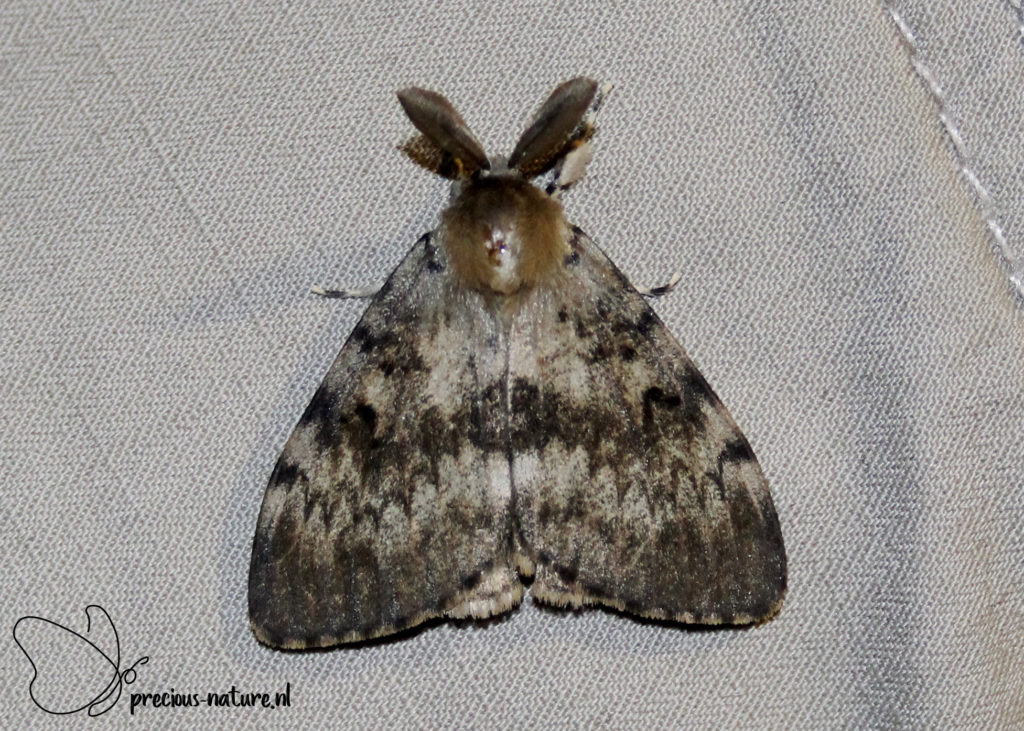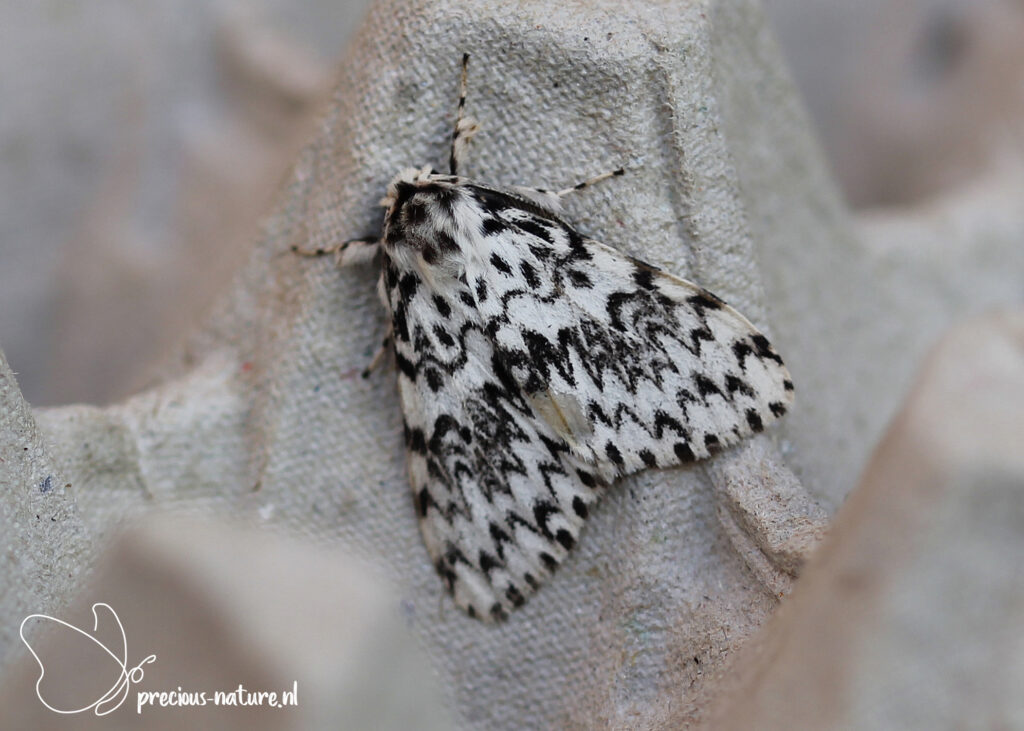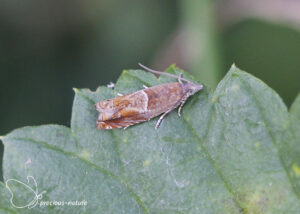Several Owlet Moths that previously belonged to the natural family of Owlet Moths (Noctuidae) have been transferred to the Erebid Moths (Erebidae). At the real owlet moths, you typically see the two “owl markings”, the kidney and the oval mark. The family-changed owlet moths were an odd one out there because they don’t have those so-called “owl markings”. Other examples are the snout owlet moths that look more like a Geometer Moth when resting, which stand out due to their long protruding palps.
Subfamily: Erebinae
Genus: Euclidia
Mother Shipton – 2023 (DE)
(NCBI-index: 938167)
While out with a group to discover specific butterflies, I suddenly saw the Mother Shipton (Euclidia mi) sitting on a flower. This diurnal moth keeps its wings slightly spread when at rest. The greyish wings have a striking pattern of brown, light brown rimmed spots. In the midfield is a characteristic jagged, cream-coloured bordered spot containing a clear black dot and a light-coloured T-shaped spot. The English name refers to the head of an old lady or witch with a long protruding nose that you can see in this spot pattern. The light, wavy line on the upper side of the forewing is edged on the inner surface with black-brown wedge-shaped spots. The hindwings are brown above with yellow-white bands. Because the wing veins are also brown, the yellow bands look more like a series of spots. The flight period spans one generation, from late April to late July, and the wingspan ranges from 25 to 30 mm. Host plant: Clover. Dutch name: Mi-vlinder. Frisian name: –
Flying period:

Subfamily: Erebinae
Genus: Euclidia
Burnet Companion – 2023 (DE)
(NCBI-index: 292571)
The Burnet Companion (Euclidia glyphica) is a diurnal moth with a warm or greyish brown, often lilac-tinged forewing. This butterfly owes its English name to the fact that it is usually found in the presence of burnets. A narrow dark band runs along the inner transverse line, and a broad dark band runs along the outer transverse line. Sometimes, these transverse bands are absent. A large, dark brown spot can be seen along the leading edge in the zoom field. When perching on a plant, the Burnet Companion often sits with its wings spread so that you can see the top of its hindwings. At the base, the hindwing is dark brown and more towards the outside orange-yellow with dark veins and a narrow dark transverse band. The underside of the front and hind wings is orange-yellow with a dark brown pattern, giving this moth a colourful impression in flight. The flight period spans two generations, from mid-April to mid-August, and the wingspan ranges from 25 to 30 mm. Host plant: Clover, Trefoil. Dutch name: Bruine daguil. Frisian name: –
Flying period:

Subfamily: Herminiinae
Genus: Herminia
Fan-foot – 2017 (NL)
(NCBI-index: 987440)
The Fan-foot (Herminia tarsipennalis) is a triangular moth when resting. The forewing is brown and has three dark transverse lines. The inner transverse line is slightly curved and makes a sharp bend at the costa towards the base. The middle transverse line is corrugated, with a central spot visible near the prominent bulge. As with other snout owlet moths, the long palps protrude. The Fan-foot flies in two generations from May to October with a 30-35 mm wingspan. Host plant: fallen leaves of Beech, Oak, Blackberry. Dutch name: Lijnsnuituil. Frisian name: –
Flying period:

Subfamily: Herminiinae
Genus: Herminia
Shaded Fan-foot – 2020 (NL)
(NCBI-index: 938191)
The Shaded Fan-foot (Herminia tarsicrinalis) has a lightly speckled forewing that is light brown to reddish-brown. The apex is slightly bent outwards. Three dark transverse lines run across the wing. The inner transverse line curves near the costa, and the outer transverse line is almost straight. This is the distinctive difference from the similar Small Fan-foot (Herminia grisealis), where the outer transverse line curves towards the apex. A darker brown transverse band containing the curved central spot is visible between the wavy median and antemedian lines. Like other fan-foots, the long palps stand out. The wingspan is 28-32 mm, and the flight period runs from May to August for one generation. Host plant: Withered leaves. Dutch name: Schaduwsnuituil. Frisian name: –
Flying period:

Subfamily: Herminiinae
Genus: Macrochilo
Dotted Fan-foot – 2019 (NL)
(NCBI-index: 997513)
In June, I had many beautiful new spots attracted to light. This also applies to the Dotted Fan-foot (Macrochilo cribrumalis). This is a white-grey to light brown-grey snout owlet moth, where the wings between the veins are finely speckled black so that the wings appear white striped. Across the forewing, you can see two rows of black dots outside the striking black central dot. The palps are remarkably long and protrude in an arc. The flying period spans one generation, from late May to August, with a wingspan of 27-30 mm. Host plant: Various grasses. Dutch name: Stippelsnuituil. Frisian name: Stippelsnútûltsje.
Flying period:

Subfamily: Herminiinae
Genus: Polypogon
Palpin Moth – 2024 (CH)
(NCBI-index: 987430)
The Palpin Moth (Polypogon tentacularius) does not occur in the Netherlands. Characteristic is the strikingly long palps bent sideways at the end. This distinguishes the Palpin Moth from other snout moths. The upper side of the wing has a light, yellow to grey-brown ground colour with a dark reddish brown dusting. Three dark transverse lines run across the wing. The inner transverse line makes a bend at the leading edge. The middle transverse line makes an arc around the crescent-shaped centre spot. The wavy line is almost straight, and the fringe line is uninterrupted. The flight period in one generation is from June to July, and the wingspan is approximately 30 mm. Host plant: various herbaceous plants (living and dead). Dutch name: Zoensnuituil. Frisian name: –
Flying period:

Subfamily: Hypeninae
Genus: Hypena
Snout – 2017 (NL)
(NCBI-index: 753189)
Like other snout owlet moths, the Snout (Hypena proboscidalis) has a striking snout because of the protruding palps. For the Snout, these palps are longer than for other species. The ground colour of the top of the wings varies from brown to dull greyish brown or even dark purplish-brown. Two dark brown cross lines run over the wings. The hindwing is very light grey. This owlet moth flies in two generations from May to October with a 25-38 mm wingspan. Host plant: Nettle. Dutch name: Bruine snuituil. Frisian name: Brún snútûltsje.
Flying period:

Subfamily: Hypeninae
Genus: Hypena
The Buttoned Snout – 2021 (NL)
(NCBI-index: 987960)
A snout that can be easily distinguished from other snout owlet moths is the Buttoned Snout (Hypena rostralis) because of its relatively narrow forewing. Usually, this owlet moth has a light brown ground colour with an alternating pattern of dark spots. The wing’s inner half is often darker than the rest of the forewing. In the midfield, you can see a narrow dark stripe on the more marked specimens between the small round, oval mark and the centre spot, through which a kind of ‘buttonhole’ can be seen. A dark, slightly offset transverse line is often visible halfway through the forewing. As with other snout owlet moths, this owlet moth has a distinctive ‘snout’ due to the long palps. The flight period is from March to June and from the end of July to October, and the wingspan is 27-32 mm. Host plant: Hop. Dutch name: Hopsnuituil. Frisian name: –
Flying period:

Subfamily: Hypeninae
Genus: Phytometra
Small Purple-barred – 2024 (CH)
(NCBI-index: 938207)
The purple moth (Phytometra viridaria) no longer occurs in the Netherlands. It inhabits nutrient-poor areas with Polygala species, such as chalk grasslands with juniper, alternating wet grasslands, open spaces, and forest edges. Because these nutrient-poor habitats are becoming increasingly rare, their existence is threatened. This small erebid moth sometimes keeps its wings spread out when resting and then looks somewhat like a geometer moth. The inner half of the forewing is light brown to ochre-yellow with a pink-red stripe along the leading edge. On the outer half of the forewing, there are two striking pink-red bands, with sometimes a narrower third pink-red band in between. The hindwing has the same light brown to ochre-yellow colour, is grey with black dust and has a dark pink with black scaled central band and a dark pink border. The fringe of both the forewing and the hindwing is white. The thorax is brown, and the head and antennae are grey. The flight period is two generations from mid-April to the end of August, and the wingspan is 19-20 mm. Host plant: Milkwort, Heather Serrate. Dutch name: Purperuiltje. Frisian name: –
Flying period:

Subfamily: Hypeninae
Genus: Rivula
Straw Dot – 2008 (NL)
(NCBI-index: 753224)
The Straw Dot (Rivula sericealis) looks like a triangle when resting. The forewing is straw-coloured with a brown dorsum and fringe. The wing clearly shows a purple central spot with two small black dots. He flies in three generations from May to October with a wingspan of 18-22 mm. Host plant: Various grasses. Dutch name: Stro-uiltje. Frisian name: Strieûltsje.
Flying period:

Subfamily: Hypenodinae
Genus: Hypenodes
Marsh Oblique-barred – 2019 (NL)
(NCBI-index: 753346)
What you do not expect directly from the Marsh Oblique-barred (Hypenodes humidalis) is that this owlet moth belongs to the Erebid Moths and thus to the macro-moths. You would rather expect it to be a micro-moth. Characteristics are the oblique transverse lines across the wing. The transverse line seen halfway across the wing cuts a marking halfway through. In principle, the cross-line goes around it. In the resting position, the transverse lines appear to be inverted ‘V’s. The spot at the wing’s centre is strikingly black, with a white deposit on one side. The flight period spans two generations, from May to October, and the wingspan measures 14-15 mm. Host plant: Rushes, Sedges. Dutch name: Moeras-micro-uil. Frisian name: –
Flying period:

Subfamily: Lymantriinae
Genus: Lymantria
Gypsy Moth – 2020 (NL)
(NCBI-index: 13123)
The male and female of the Gypsy Moth (Lymantria dispar) are pretty different in size and colour. The males have brown-grey forewings with several dark serrated transverse lines. A small central dot formed by the transverse lines can be seen in the median band. The females are much larger and have cream-coloured wings over which three brown-black transverse lines run. The transverse lines also form a dark central spot in the median band. The flying period is from mid-June to the end of August in one generation. The wingspan of males is 37-53 mm, and for females, 53-65 mm. Host plant: Various deciduous and coniferous trees. Dutch name: Plakker. Frisian name: Plakker.
Flying period:
![]()
Subfamily: Lymantriinae
Genus: Lymantria
Black Arches – 2023 (BE)
(NCBI-index: 78897)
In the Netherlands, the nun butterfly (Lymantria monacha) is less common than in the north of Belgium. In southern Belgium, it is a widespread species. This striking moth was in the moth trap I had set up in the Belgian Ardennes with its white to creamy white forewings and many black, strong, serrated transverse lines and spots. The inner zone is usually empty except for a clear centre dot. Further outwards are an inverted V-shaped spot and a few closely spaced lines. Sometimes, these lines merge into a dark zone, and sometimes, the entire midfield is dark. The female has a pointed abdomen with which she can bury the eggs deep in a bark crevice. The flight period spans one generation, from mid-June to mid-October, and the wingspan ranges from 30 to 50 mm. Host plant: various conifers, deciduous trees and shrubs. Dutch name: Nonvlinder. Frisian name: Nonflinter.
Flying period:


